What is a pedicure, what happens and how to do it?
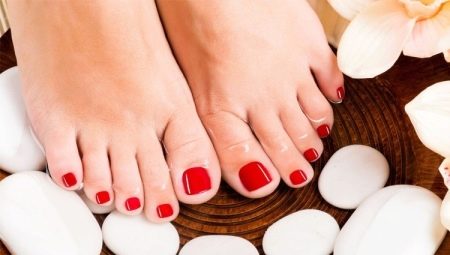
Talking about the beautiful appearance of a woman's figure, one cannot but recall the slenderness of her legs, which has been driving more than one generation of men crazy since the very times when women's legs became the property of their eyes. Continuing this thought, it should be said about the condition of the feet and toenails in women. They should be in perfect condition. Special treatments aimed at their care and hydration are not just a tribute to fashion or the desire to look attractive, but also health care.
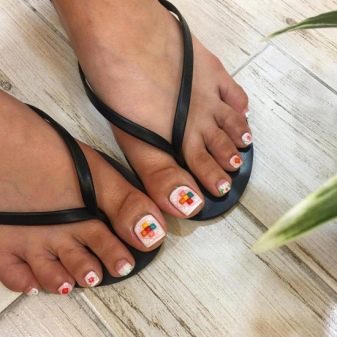
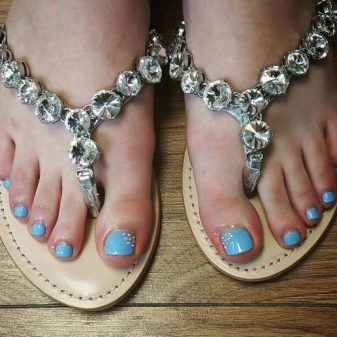
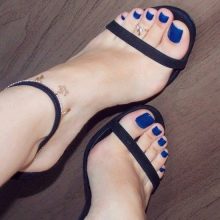
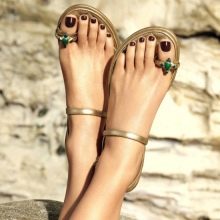
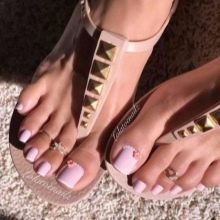
What it is?
A pedicure is a procedure that takes care of your feet and toenails at regular intervals. This cosmetic procedure is also curative. In the process, keratinized cells are removed from the surface of the skin, various cracks on the heels, ingrown nails are treated, dry calluses are eliminated.
With regular foot care in the early stages, you can find various deformities of the foot, flat feet, nail fungus and other diseases.
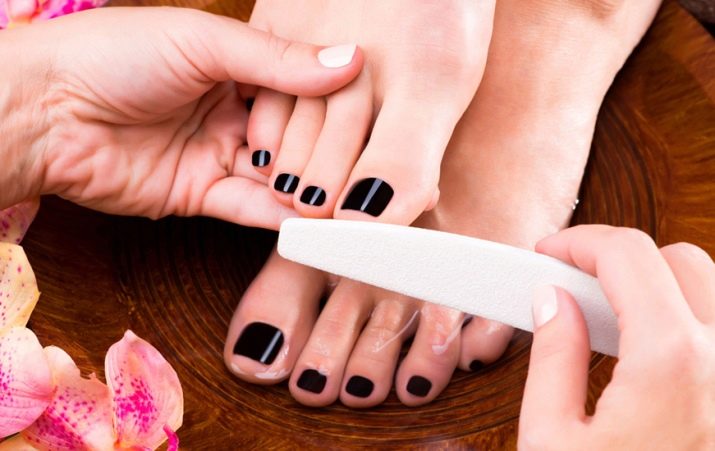
Types and forms
There are the following types of pedicure, the whole variety of which can be reduced to 2 groups - manual pedicure (performed by a specialist manually) and hardware (using a pedicure apparatus with cutters).
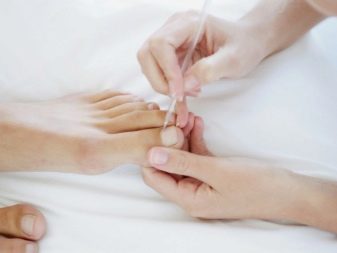
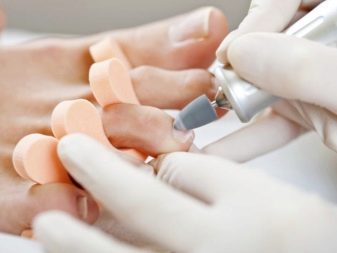
Let's take a closer look at the most popular types of pedicure.
Medical
The essence of the procedure is not only giving the legs a beautiful and well-groomed appearance, but also treatment. Such a pedicure is performed using a medical device that gently and non-traumatically removes dead cells. Undoubtedly, this is one of the advantages of the procedure - the absence of injuries and open wounds on the skin. Another advantage of a medical pedicure is the use of not only care, but medicinal compositions. Finally, only a specialist with medical education carries out such a procedure, according to existing standards.
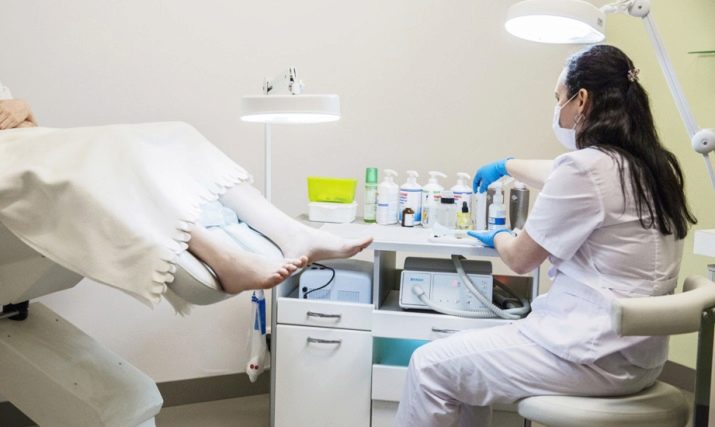
Removal of keratinized areas is carried out with the help of removers - special compositions, for example, with organic acids, which soften dry skin and seals, after which they are easily removed with a pumice stone. If necessary, right during the procedure, the specialist will treat the feet (remove an ingrown nail, eliminate cracks in the heels). The medical pedicure usually ends with the application of a moisturizing cream with antifungal and antiseptic effect on the feet and massage them.
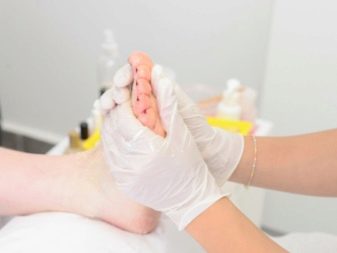
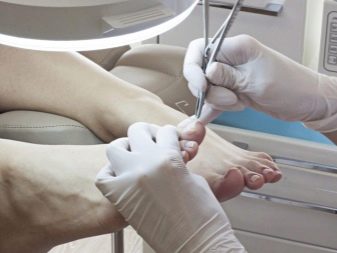
Classical
One of the well-known, fairly versatile and popular types of pedicure. Correctly speaking - a classic trimmed pedicure. It involves applying an emollient cream to the feet and treating nails (caring for the cuticle, giving the nails the desired length and shape).
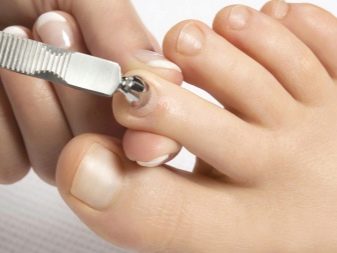
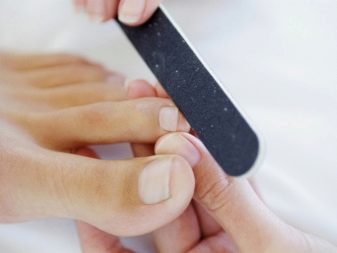
After that, the legs are steamed in a bath with the addition of sea salt, sometimes - extracts of medicinal herbs. Steaming usually takes no more than a quarter of an hour, after which the keratinized areas are treated with graters and pumice. In the arsenal of the master there are several of them - with a larger abrasive and smaller. First, coarse abrasives, graters are used, and then more delicate tools. At the end of the procedure, a moisturizer is applied.
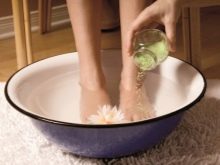
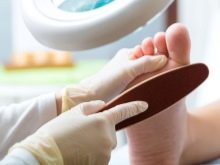
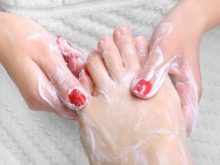
The effect of the procedures is noticeable immediately, and it is quite impressive. On average, the result is enough for a month. It is also worth noting its efficiency - it will take about 40-60 minutes.
But it is important to carefully choose a pedicure salon and a master, since the classic procedure involves a violation of the integrity of the skin, which, if the rules of antiseptics are not followed, can cause serious suppuration and inflammation.
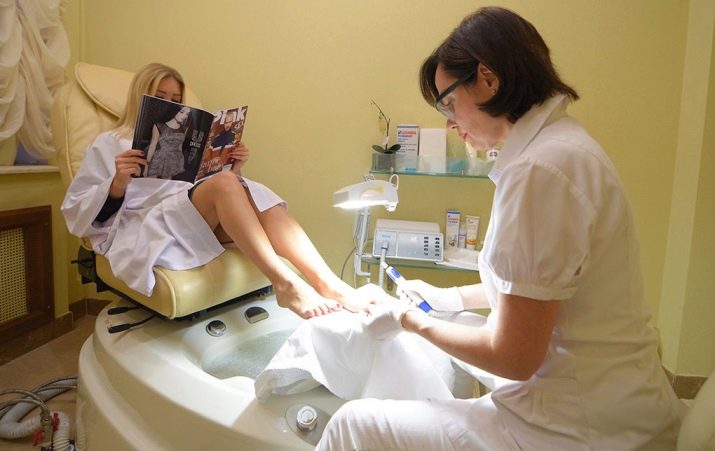
Hardware
The procedure is carried out using a pedicure device with different attachments. By changing the attachments, you can solve various problems with the feet, including removing rough skin.
The hardware pedicure is suitable even for the care of men's feet, which are naturally rougher and drier.
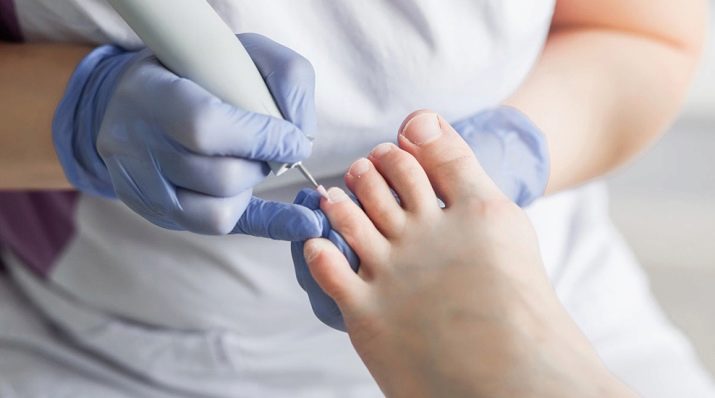
Another advantage is the absence of cuts and other damage to the integrity of the skin, so we can talk about the safety and atraumatic nature of the hardware pedicure.
Moreover, the procedure itself takes a little time - about an hour, and is painless. In especially advanced cases, you have to do 2-3 procedures in order to have a tangible effect.
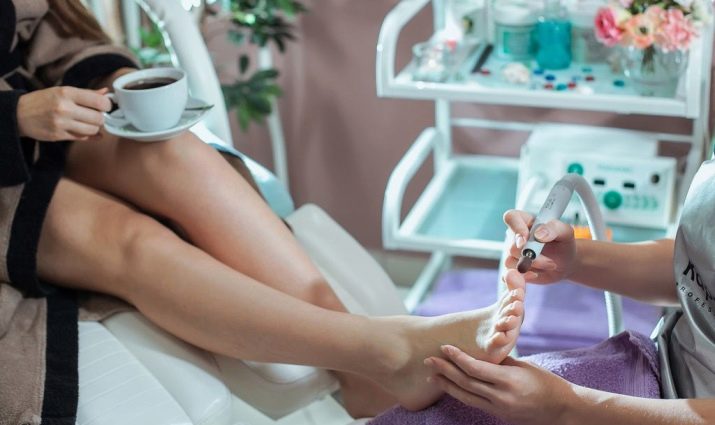
European
European pedicure is also called unedged pedicure, and special creams and gels are used to soften the keratinized areas on the feet and toes and remove the cuticle. This makes the procedure safe and painless, but it can be ineffective on severely neglected legs. Frequent and regular treatments will help to achieve a more pronounced result.
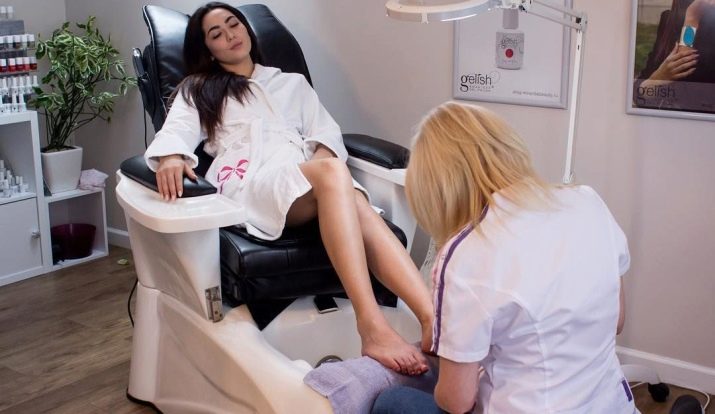
European pedicure begins with the application of cuticle removers and formulations. When the latter softens, it is not cut off, but pushed aside with an orange stick to the nail bed. Nails are also not cut, but only various files are used.
The next step is to remove the rough skin on the feet (it will just soften after the remover) using graters and files.
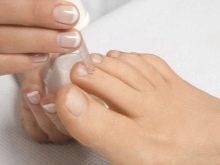
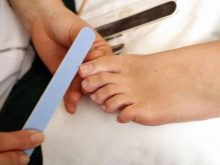
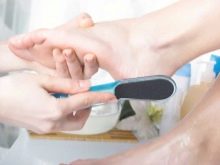
SPA pedicure
During this procedure, great importance is attached to the relaxation of the client. For this, a pleasant atmosphere is used (pleasant music sounds, aromatherapy is used). Dead cells are removed using scrubs, creams and various extracts from natural ingredients. Pedicure appliances, scrapers and pumice stones are not used.An indispensable element of a SPA pedicure is a foot massage performed manually by a specialist. In addition, masks and moisturizing serums are applied to the feet. The procedure can be quite long, up to two hours.
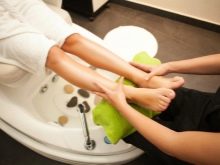
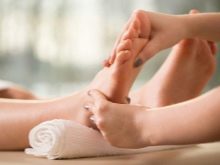
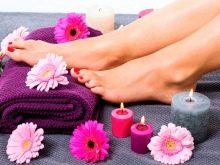
Japanese
Such a pedicure is also called rejuvenating, because in the process of its implementation, natural moisturizers and skin softeners with an antioxidant effect are used. In this case, the cuticle is not trimmed, but pushed back with a wooden stick. Instead of pumice and scrapers, scrubs are used, after which foot baths are provided. The softened keratinized skin is cleaned off with a special rice block, after which moisturizing compositions are applied, for example, with lotus extract. The procedure ends with a manual foot massage.
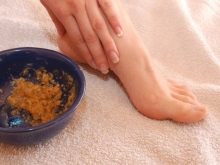
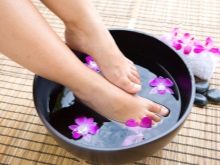
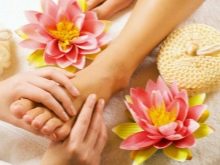
Like SPA pedicure, the Japanese procedure allows you to relax, improve the condition of the skin on the feet without the risk of infection (since the method is atraumatic).
In addition to these, a number of salons offer their own types of pedicure, for example, acidic (using products based on organic acids), paraffin (with softening and moisturizing paraffin baths), fish (usually found in Egypt, in Thailand - small fish bite off coarse skin) other.
Women's manicure can be coated or uncoated. In the first case, the nails are decorated with colored varnish, in the second, it is absent.
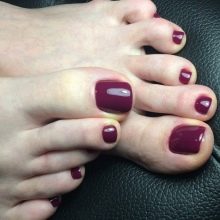
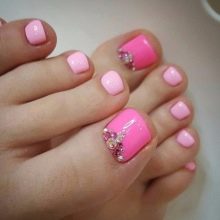
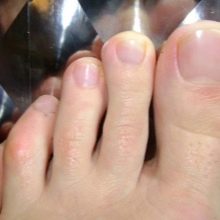
Choice of tools and tools
To get a high-quality result from a pedicure helps in many respects the presence of the "right" tools. Of course, it is different for different masters - some have a minimal set, while other masters use more tools. However, the basis for each remains the same.
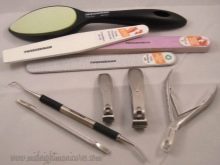

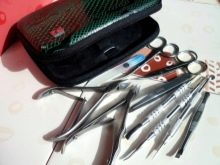
Nippers and tweezers are used for the cuticle. The first are used to remove protruding corners, burrs. The second is for cutting the cuticle. If you have an unedged pedicure, you will also need orange sticks.
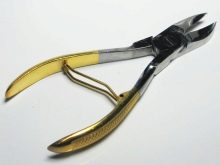
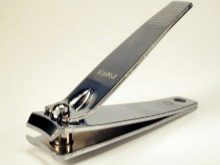
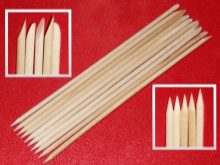
For nail care (correction of length and shape), nail clippers and scissors, files and grinding files are used. Pedicure pusher, which is a double-sided instrument with a curette and a scapula on each side, is designed to separate the stratum corneum, cuticle.
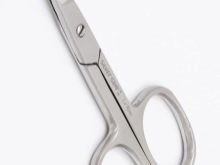
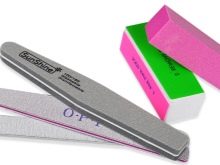
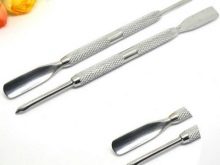
A pedicure scraper, graters and pumice stone allow you to achieve smooth heels, remove rough skin. They come in different degrees of action - that is, directly for removing keratinized skin and polishing. Outwardly, these devices differ in the size of the abrasives.

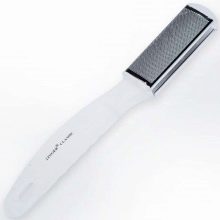
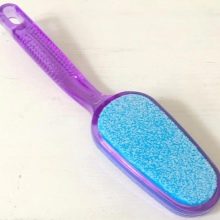
Most of these tools successfully replace the cutters on the pedicure machine. You cannot do without it if the task is to carry out a quick and atraumatic pedicure.
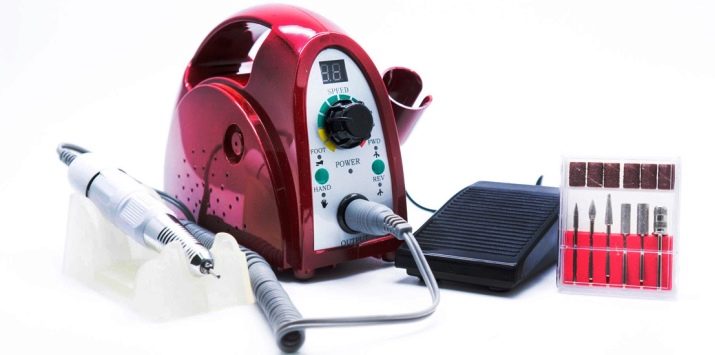
In addition, you will need a basin for the foot baths. Today, you can also find on sale electronic foot baths, which also provide the effect of a jacuzzi, and allow you to produce water massage.
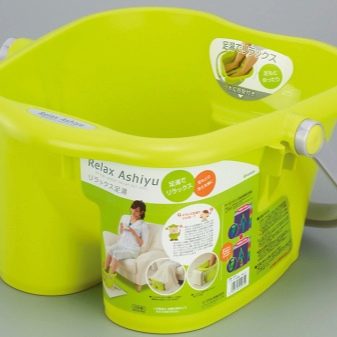
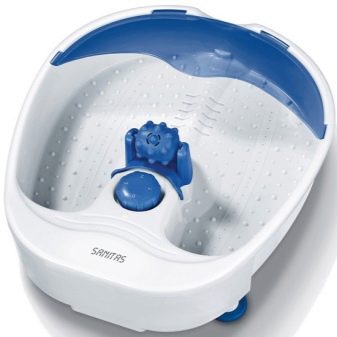
The safety of the procedure depends on compliance with the rules of antiseptics. By standards, most tools must be fired in a special dry oven or cabinet after each use. If you do a pedicure at a salon, check if they have one. By the way, after the disinfection procedure, each instrument is wrapped in individual craft packaging.
On its surface, the date of the antiseptic treatment, the name and signature of the specialist who performed it is put.
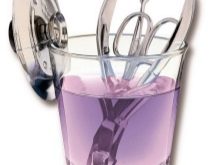
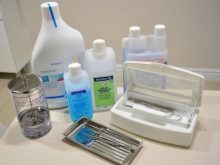

A number of instruments must be disposable. These are orange sticks, various napkins, master's gloves (by the way, any, even unedged pedicure, in the salon should be done exclusively in them).
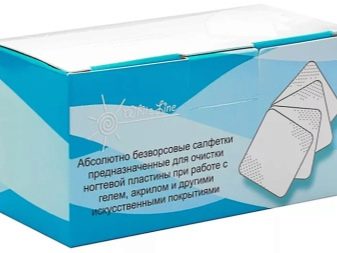
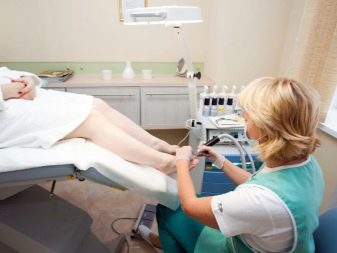
If a coated pedicure is performed, then varnishes and means for their removal will be required, and if gel polish is applied, then a special UV lamp is also required to fix it.
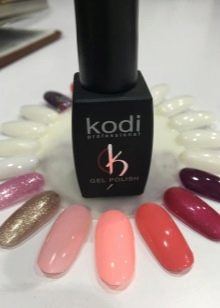
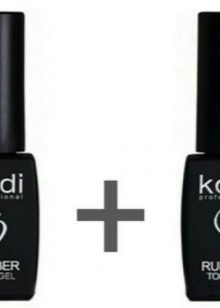
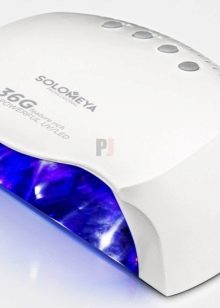
The procedure also requires antiseptics, a softener of keratinized skin areas, moisturizers, scrubs, varnishes and bases for them.If you intend to massage the feet, then it would be good to get massage and aromatic oils.
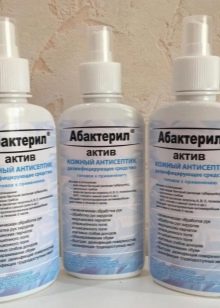
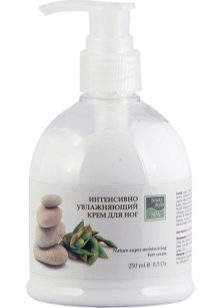
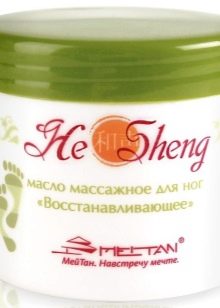
Step by step instructions
Features and stages of the procedure depend on the type of pedicure. In general, the process should include the following steps:
- softening (carried out with the help of removers or steaming feet in a bath);
- removal of keratinized skin areas (for this, both special compositions and traditional scrapers and pumice stones can also be used);
- treatment of the nail plate (cutting the cuticle or moving it to the nail bed with an orange stick, giving the nails a suitable length and shape);
- foot care (applying masks and compositions, paraffin masks, hydration is mandatory at this stage, in some cases massage);
- decorating nails if a coated pedicure is performed.
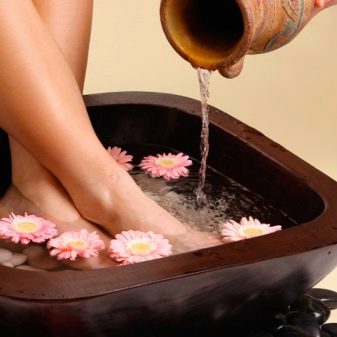
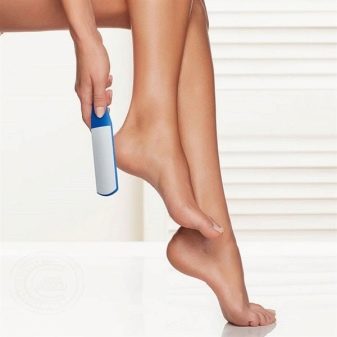
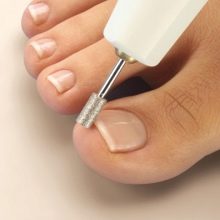

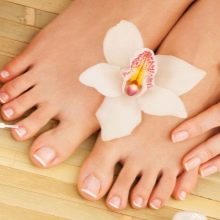
If you are doing a pedicure yourself at home, then you can use the following step-by-step plan.
Give your nails a shape and a comfortable length
If there is an old coating on the nails, it should be removed first. Then you need to decide on the length of the toenails and trim them with pedicure scissors. An important point - you can only trim your toenails in a straight line. Rounding the corners is fraught with ingrowth of the nail plate into the nail bed.
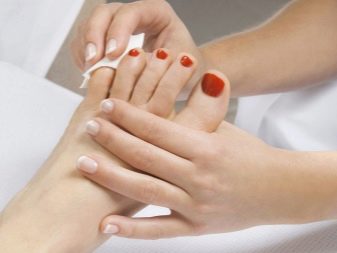

Finally, a file will help to give the nails a suitable shape. It is most correct to use a glassy one, since it does not violate the structure of the nail, and in addition, it is easy to use and durable. A file for sanding will help to give the nails smoothness.
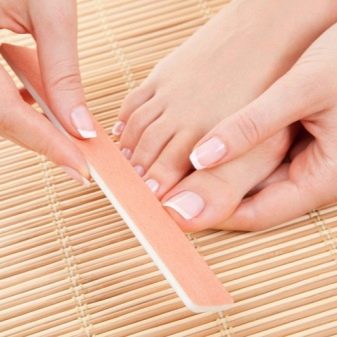
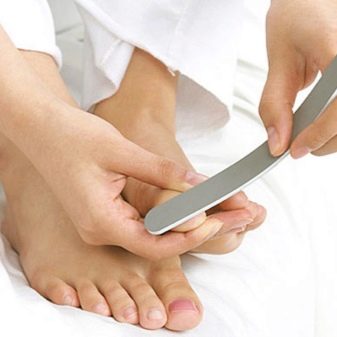
Steaming legs
To do this, pour water (temperature 38-40C) into a basin or a special bath and lower your feet into it for 15 minutes. For greater efficiency, you can add sea salt, a decoction of chamomile, doom bark and other herbs to the same place.
Using various additives, you can change the properties of the bath. So, if you add a couple of drops of essential oil to the water, then the bath will acquire a tonic and deodorizing effect.
If you are also treating fungus, it is best to use a disinfecting soda bath.
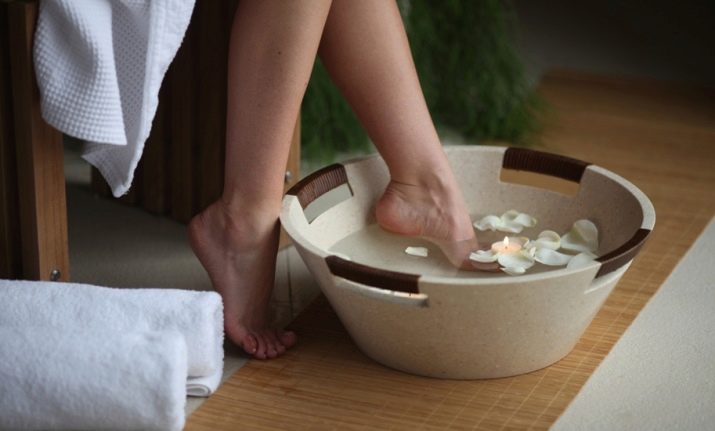
You can add a couple of drops of iodine to it to strengthen your nails. A bath with sea salt has a deodorant and relaxing effect, but it should be discarded if there are wounds and inflammations on the skin. For sweating feet, you can make a composition with the addition of a decoction of oak bark. After the procedure, dry your feet thoroughly, a waffle towel is ideal for this.
Steaming can be done before the nails are shaped and long, but it is important to remember that cutting and filing the nails can only be done after they are completely dry.
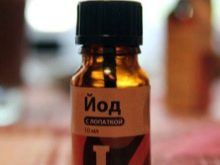
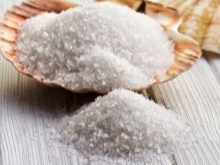
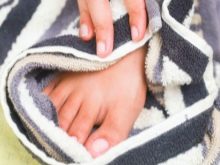
Removal of hardened skin
Typically, the hardest area is the heels. To cleanse them, use a grater or coarse pumice stone, which is worth walking along the edges of the heels. It is in these places that the largest skin seals appear - corns. It is forbidden to use a razor to remove rough skin, scrape it off with scissors, a blade. This is fraught with serious injuries, in addition, the skin removed in this way will actively regenerate, which means that the corns will reappear in a short time.

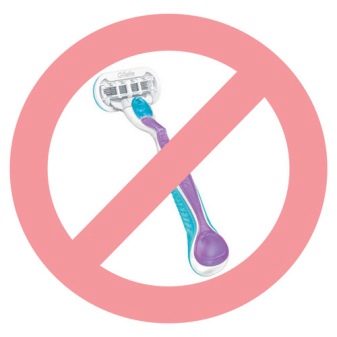
After using tools with a coarse abrasive, you need to take the more delicate and polish the treated surfaces and the rest (center) of the heel. A pumice stone with a fine abrasive can also be used to treat fingers, but it is much more convenient and safer to use a special foot scrub. It can be applied to the entire surface of the foot (including the treated heels) and massage the legs for a few minutes. Then you should rinse your feet and pat them dry with a waffle towel.
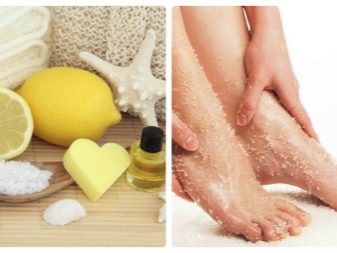
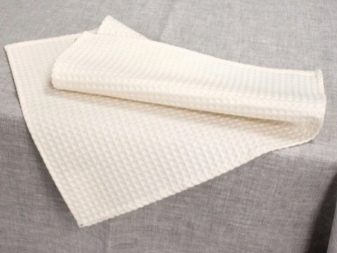
Cuticle care
After steaming, the skin becomes soft, so it's time to take care of the cuticles. First of all, remove the burrs and protruding sections of the cuticle with special nippers. Then you can trim the cuticle or move it towards the nail bed.In any case, it will be useful to blot the treated areas with a cotton swab dipped in an antiseptic solution.

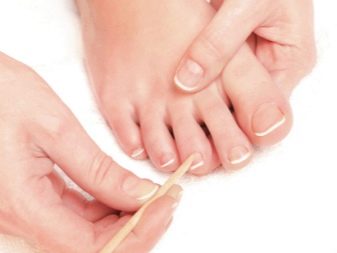
Moisturizing
To complete the procedure for treating feet, apply a moisturizer. It should be rubbed into the skin with gentle but strong movements. It is good if the composition contains vitamins E, A, various natural oils.
They moisturize the skin best of all, prevent early and aging.
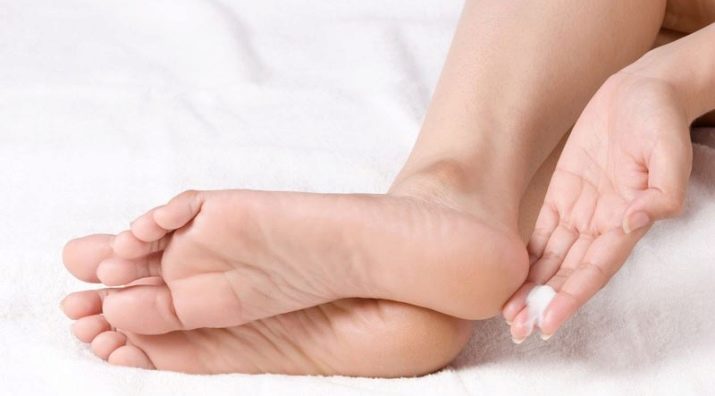
Decorating nails
If you plan to cover your nails with varnish, then you should first degrease them. This is necessary in order for the coloring composition to lay down evenly, because the remnants of creams could remain on the nails. A regular nail polish remover is suitable for decontamination. After that, you need to wait 10 minutes and wipe your nails with a dry napkin, and then start applying varnish.

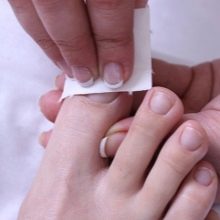
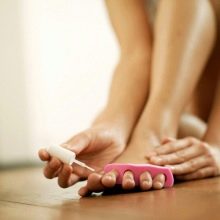
Ideally, when decorating nails, a base coat is first applied, followed by a base coat of color. Its amount is determined by the desired color intensity. At the very end, the nails are covered with a fixative, which will allow the pedicure to last longer. An important point - each applied layer should be given time to dry completely. For ease of application, you can use a dedicated finger separator.
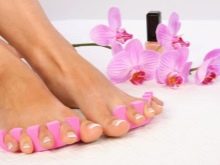
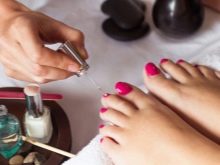
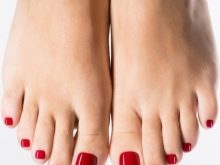
Application of gel polish will make the coating more durable., which implies the use of a UV lamp. To achieve the duration of wearing up to 6 weeks and high quality coating allows compliance with the application technology (use of a primer, fixing each layer in a UV lamp) and the power of the lamp itself.
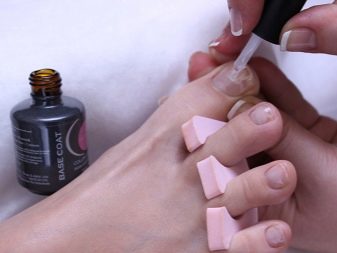


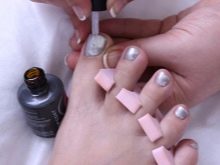
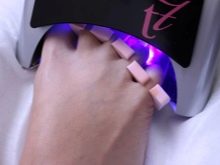
It is important to remember that gel polish dries up the nail plate, therefore periodically (for example, every second pedicure) it is recommended to apply a special restoring and caring composition under the main layer.
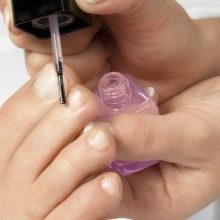
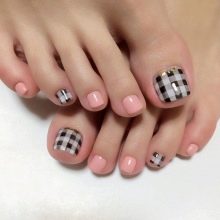
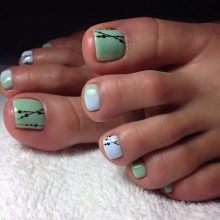
You should immediately prepare everything you need for the procedure. Ideal if you are using professional one line products. Among them are products from the Israeli brand Clearance, which are trusted by both professionals and those who do their own pedicure.
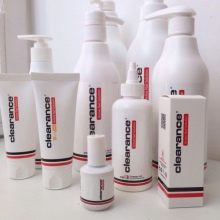
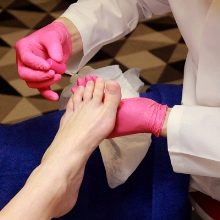
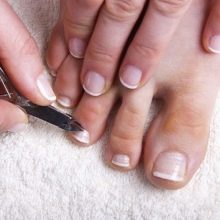
New items and fashion trends
The main trend is, perhaps, beautiful and healthy feet. Today, in order to be known as a fashionista, it is not at all necessary to master nail art, it is enough to maintain the smoothness of the feet, eliminate dry calluses in time and take care of nails. As a decor for the latter, even caring compositions like "Smart Enamel" are suitable, which will give the nails shine and a healthy look.

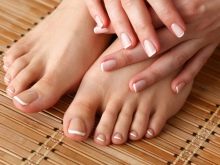
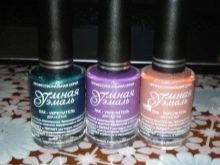
However, women's pedicure still has certain trends. Let's consider the most popular ones.
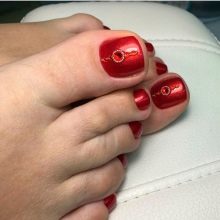

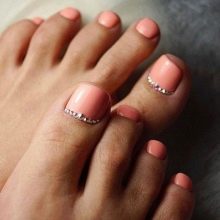
Monochrome
Such a pedicure can be called universal and simple to perform, but at the same time noble and stylish. The choice of shades is unlimited - it can be neutral, pastel (peach, pink) and bright colors. An important point - you should not choose the same color for the legs as used on the hands.
Today it is bad manners.

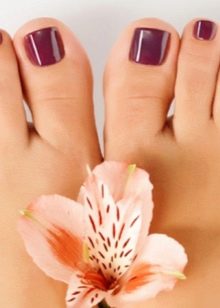
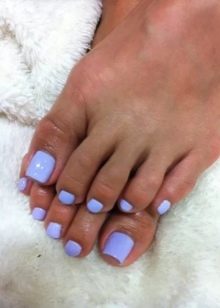
Unpretentious drawings and geometry
Complex nail art is becoming a thing of the past, and rather simple drawings and patterns come to replace it - peas, curls, unpretentious flowers. Geometric patterns are in trend. Today, stylists recommend combining nail designs with a solid color or French manicure. The drawing is performed not on every nail, but on 1-2 and serves as an accent.
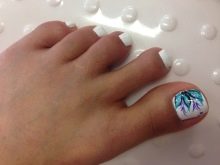
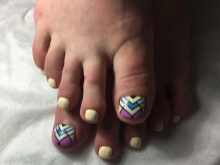
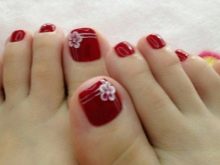
Rhinestones
The use of rhinestones is another hit this season, but rhinestones require moderate use and thoughtfulness as a pedicure, and that and the image as a whole. It is recommended to use small rhinestones, laying out a pattern or drawing from them. As a rule, rhinestones are combined with a monochromatic pedicure and are used to decorate only the thumb. This allows you to make the design elegant, avoid absurdity and excessive outrageousness.
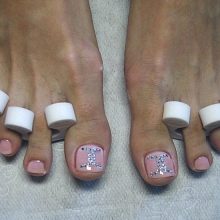
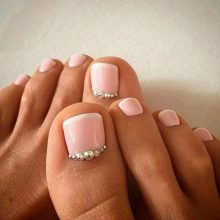
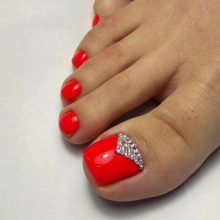
Moon pedicure
With a moon pedicure, the nail hole is highlighted in a separate color. Such a pedicure has remained fashionable, perhaps, since its inception. But every season, manicurists offer new solutions for moon manicure.Today the hole may not have a classical shape, but be triangular, square, double.
The hole, or "smile" on the nails can be in contrast to the main color or performed in the same gamut. You can decorate with holes only the big toes, painting the rest of the nail plates in a monochrome shade. Quite often "pedicure with smiles" is combined with rhinestones.
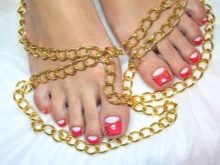
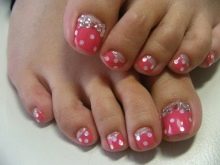
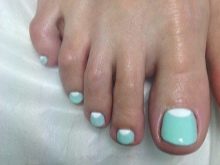
French
Those who consider French manicure to be something boring and overly simple simply haven't seen its modern interpretation for a long time. Traditional stripes along the edge of the nail today are made in contrasting shades, as well as using golden and silver rubbing. French is harmoniously combined with a "hole", geometric patterns, there is a striped version of it, decorated with a pattern and rhinestones.
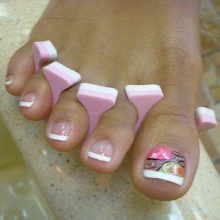
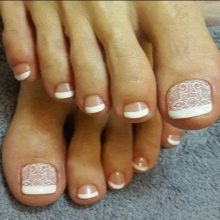
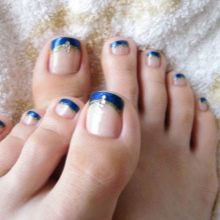
Ombre (amber)
The ombre manicure, or a gradient, implying a smooth transition from one more saturated shade to a lighter shade, does not give up its positions either. Today, the technique is used not only within one nail plate. Stretching from tone to tone can cover all fingers at once. That is, the large one is painted in the most saturated shade, the index one is lighter, the middle one is even lighter, and so on.
A delicate gradient can also be decorated with rhinestones or patterns.
But here it is very important to avoid the clutter of details, so it is better to decorate only with thumbs.
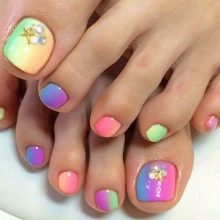
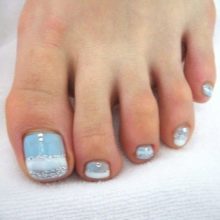
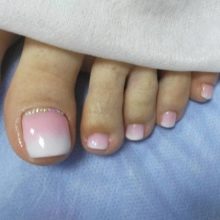
Multi-colored fingers
This option is especially good for the summer season, trips to the sea. However, you can also choose it for those who wish to bring bright colors to the gray autumn-winter weekdays. As a rule, this technique uses 2-3 different colors, which can be either close or contrasting. The combination of yellow and blue, purple palette, pink and mint, turquoise has already become classic.
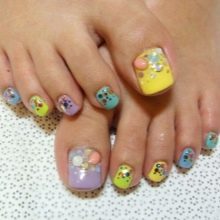
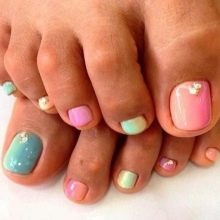
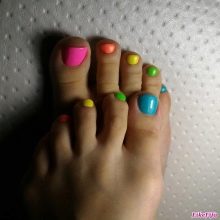
Mosaic
The advantage of such a coating is not only in its brightness and originality, but also in its versatility. It is enough to choose for the mosaic pedicure those shades of varnish that match the color of your main pairs of shoes.
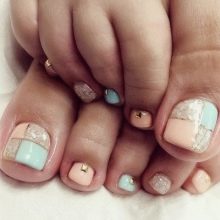
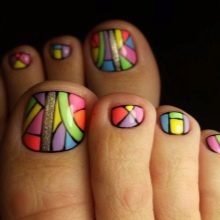
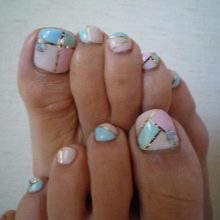
Professional advice
When choosing a shade of nail polish, you should consider not only personal preferences and fashion trends, but also skin tone. For young ladies with warm skin tone, warm colors (orange, red, peach) are suitable, respectively. Owners of the skin of a cold shade are advised to choose cold pink, lilac, light blue, blue. If this rule is not followed, unnaturalness, dissonance in skin tone and stained nails cannot be avoided.
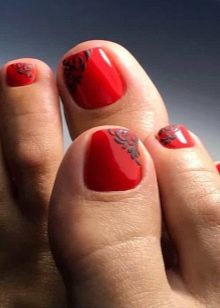
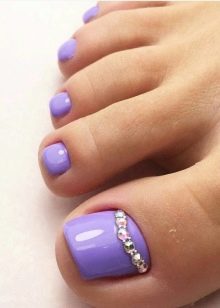
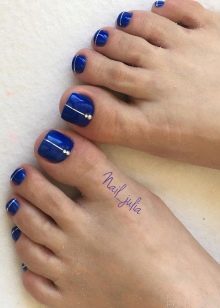
Experts recommend doing a pedicure once a month and supporting it once a week using almost smooth pumice stones and scrubs. For such a procedure, you do not need to steam specially the legs, but simply do the treatment after a shower or bath, because the feet at this moment also soften.
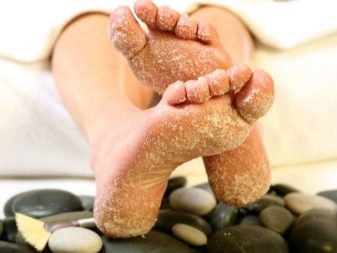
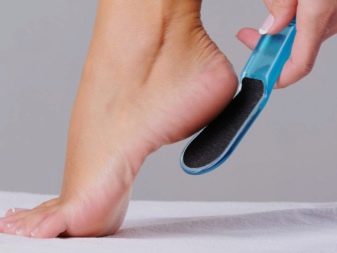
When performing a pedicure in a salon, the price usually includes nail design separately. For example, decorating one nail with rhinestones or rubbing in can cost from 30 to 150 rubles. If you want to get an unusual pedicure, but at the same time save money, ask the master to use 2 or more colors. According to the price list, it will look like a monochromatic coating without the use of additional decor, but in fact, highlighting certain fingers in different shades, you will get an original design.
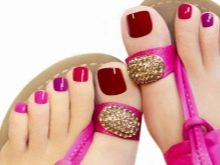
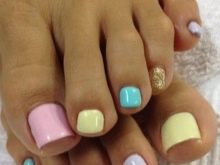
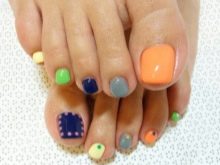
For home pedicure, you can use special socks. Reviews suggest that such procedures will help restore smoothness even to "neglected" feet. Socks can be made of cotton fabric with a special impregnation inside or cellophane, also containing a softening compound. The former are usually worn at night, the latter for 15-30 minutes.
They act like removers, softening the skin and exfoliating dead skin cells.
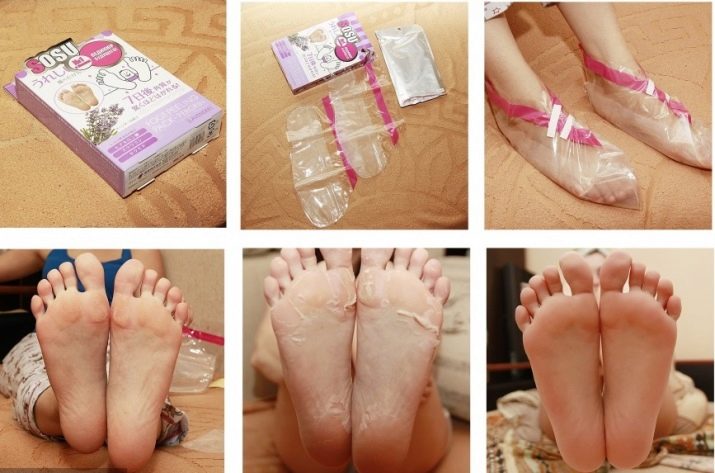
Beautiful examples
When choosing a fashionable pedicure design, you can try to draw inspiration from the stars. Of course, the options for their pedicure should be taken as samples, ideas, without trying to accurately reproduce what they saw.To do this, you may not have the right materials or skills at hand. In addition, self-care, in particular nail design, is a kind of creative act, an opportunity to show your own individuality.
A bright, but at the same time delicate, turquoise-blue shade of varnish goes well with shiny shoes on an exquisite stiletto heel.
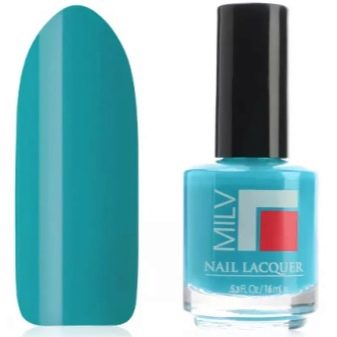

Are you looking for a win-win decor that suits any situation? Choose classic red in monochrome without rhinestones and patterns. You can "support" it with a makeup element or accessory, as Michelle Williams did.
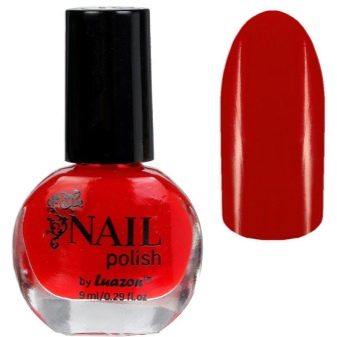
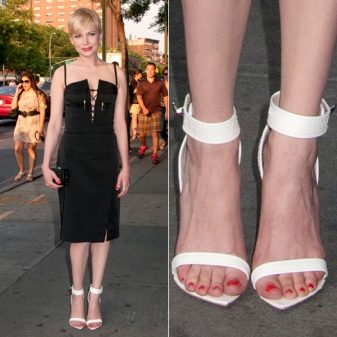
Another traditional yet elegant option is the milky and powdery shades of nail polish. You can easily verify this by looking at the stylish and sophisticated Penelope Cruz. The main thing is that they are not in tune with the skin or lighter than it. A great addition to open shoes in beige, gold and brown shades.
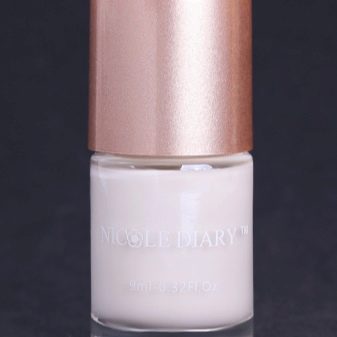
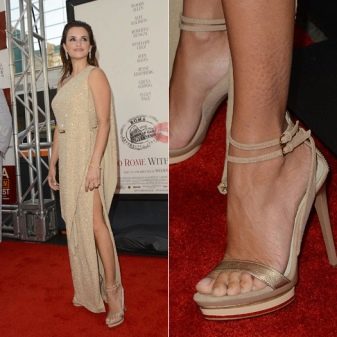
Monochrome solutions using varnishes of dark shades (black, dark chocolate, deep burgundy), it seems, will never go out of fashion. The secret of their popularity lies in their special charm and compatibility with almost any shoe. Elizabeth Banks confirms this idea once again.
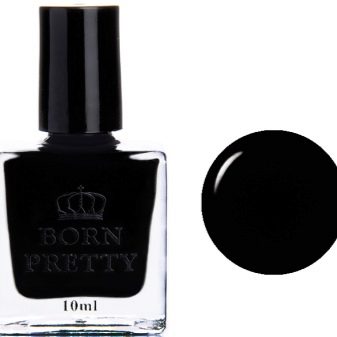

You can be considered a "fashionable thing" by carefully choosing the tone of the varnish to match the shoe. Undoubtedly, Jay Lo did just that, collecting this stylish and bold look. True, when changing shoes, you will have to change the shade of the nails.
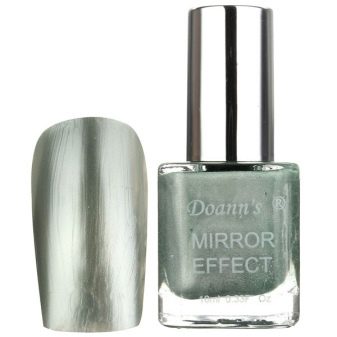

See below for more details.








